Despite being only 23 years old, New York Mets shortstop Amed Rosario seems like he’s been around forever.
Originally signed out of the Dominican Republic in July 2012, Rosario inched his way through the Mets system, requiring nearly five years to ascend from rookie ball to the MLB squad. Rosario’s stock rose considerably along the way, peaking at eighth on Baseball America’s 2016 top prospects ranking, while MLB.com ranked him as the 11th best prospect heading into 2017. His advanced prospect pedigree, along with extended minor league tenure, drew anticipation for Rosario’s late 2017 MLB debut to a fever pitch.
However, things haven’t gone as planned, with Mets fans and fantasy owners alike growing impatient with Rosario’s middling .676 OPS and 70% stolen base success rate over the last two years.
On the surface, Rosario’s start to 2019 looks to be bringing much of the same, with a .267 batting average and .390 slugging percentage to go along with a bottom-third spot in the Mets’ lineup. The result for this post-hype prospect has been minimal fantasy buzz, with a sub-50% ownership level in Yahoo leagues and a slew of existing owners growing increasingly weary of his performance.
However, Rosario is on the cusp of a massive breakout — one that he teased late last season. He is making better swing decisions at the plate, drawing more walks, and hitting the ball harder all around the field — a trio of improvements obscured by poor batted ball luck to start the season. Current Rosario owners should hold on tight while prospective ones should pounce on waivers or via trade before the impending breakout occurs.
A Good Comp
Let’s lead things off with a comparison of sorts: one that highlights the importance of giving a young, speedy middle infielder time to mature.
Astros second baseman Jose Altuve wasn’t always a perennial all-star capable of hitting .330 with 20+ home runs. In fact, the start to his MLB career looked remarkably similar to Rosario’s, with both players debuting at 21 years old and largely scuffling over their first several seasons.
While Altuve always displayed plus contact abilities and thus a solid batting average, he was completely devoid of power at a young age, posting a microscopic .092 isolated slugging percentage from 2011 to 2013. Meanwhile, Rosario displayed more swing-and-miss and a subsequently lower batting average, but with more power. The end result was that Altuve and Rosario posted very similar slugging and OPS numbers to start their career.
It wasn’t until Altuve’s age-24 season that he truly broke out by winning the AL batting title. Two years later he became a 20-home run hitter. Now at 28 years old, Altuve is one of the most complete offensive players in baseball and is progressing towards a Hall of Fame career.
Clearly, Altuve’s case is more the exception than the rule; however, it is a lesson in patience, particularly for a speedy middle infielder brought along at a very young age.
Green Shoots
In a post-recession landscape, economists will often use the term “Green Shoots” to describe signs of a nascent economic recovery, even while the Main Street economy hasn’t caught up yet.
This term could be used to describe Rosario, who is displaying significant indicators of growth at the plate in spite of his mainstream numbers lagging. Let’s start by analyzing his expected batting average (xBA) on a rolling 100 plate appearance basis.
Notice the two humps in late 2018 and early 2019. Within the last three months of play, Rosario has twice reached high watermarks in xBA far above any level he hit from late-2017 to mid-2018. Moreover, since mid-2018, Rosario’s xBA hasn’t crossed below the MLB average, denoted by the red line, while it was consistently below that point in the year prior.
Rosario’s xBA since August 1, 2018 is .291, while it is up to .302 in 2019. Both marks above the 85th percentile of MLB hitters in their respective time periods. Yet Rosario’s actual batting average trails his expected by 35 points so far in 2019.
This is interesting because players who possess Rosario’s sprint speed, which ranks eighth in baseball this season, typically outperform their expected batting average by earning a disproportionate share of infield hits.
Sure enough, eight of the top 10 players in sprint speed in 2018 outperformed their xBA, with an average BA surplus of 11 points. Rosario’s 12-point deficit since August 1, 2018 and 35-point deficit in 2019 certainly look like massive outliers compared to what players of similar speed are able to achieve.
This means that if Rosario can maintain a .290 to .300 xBA, his actual batting average should easily clear .300, and perhaps approach .310 due to his speed.
A Change in Approach
Rosario’s improved xBA can be distilled down to two main changes: better swing selection and improved exit velocity — changes which are inextricably related.
Rosario entered the league as a free-swinger, getting himself into bad counts and hacking excessively at pitches outside of the strike zone. But Rosario has made strong, incremental progress in this regard since his debut. Take a look at the rolling 25-game chart of his zone swing and outside swing percentages.
Notice the convergence between the two lines over his first 125 MLB games, telling of a hitter with a poor approach at the plate. However, over his last 100 games, Rosario’s zone swing rate has increased significantly while his outside swing rate has fallen, with the difference between the two increasing from 21% in 2017 to 39% in 2019.
More specifically, his swing rate on pitches over the heart of the plate increased by three percentage points from 2018 to 2019, while his swings at Chase and Waste pitches dropped by nearly three points. Thus far in 2019, he’s deciding to swing at good (hittable) pitches a rate over three times higher than bad (unhittable) pitches.
Despite making better swing decisions, Rosario’s swinging strike rate has increased, 12.8% to 15.5%, while his contact rate has decreased, 76.0% to 70.1%, from 2018 to 2019. His strikeout rate has increased as well. Perhaps this is a bit puzzling: If a hitter is swinging at fewer bad pitches, shouldn’t they make more contact?
Surprisingly, neglecting to swing at a pitch outside the strike zone has minimal impact on striking out. The bigger change comes with batted ball quality. Since Rosario is swinging less outside the zone, he’s avoiding weak contact on bad pitches while also working better counts. Once in those better counts, Rosario is getting better pitches to hit, where he is employing more aggressive swings that are resulting in more whiffs, but also more hard hit balls.
Hitting It Hard
I previously wrote about how whiffs and hard contact are directly related. Players that hit for high exit velocities and barrel counts typically whiff a lot, and vice versa. Moreover, when players improve their batted ball authority, their whiff rate tends to go up.
This is the phenomenon that is occurring with Rosario, whose more focused plan of attack coincides with an aggressive swing approach on balls in the zone. The result is a new normal exit velocity range around 90 mph — considerably higher than the mid-85 mph levels he was accustomed to posting through mid-2018.
Rosario’s improved ability to hit the ball hard is the driver behind the recent increases in his xBA, which has been hovering around .300 since late last season. Fortunately, Rosario isn’t just manufacturing better hit ground balls, he is also hitting the ball harder in the air.
Rosario’s exit velocity on fly balls and line drives is up significantly in 2019, at 92.5 mph, while his barrel rate is at a career-high 6.7%. These figures are behind a career-high xSLG for Rosario of .441 on the season, which is over 50 points higher than his actual SLG of .390.
Granted, Rosario’s batted ball authority on air balls is still roughly league average, even with his improvements in 2019. But that’s fine. Rosario isn’t a player that will ever possess a double-digit barrel rate. But if he is shooting the ball in the gaps for enough doubles and triples that his ISO trends into .150 territory, that will work for his profile.
Act Now
Rosario is showing some real signs of improvement. Since late last season, he is making markedly better swing decisions at the plate and subsequently driving the ball with increased authority. Unfortunately for Rosario, the start to his 2019 season has been mired by poor batted ball luck, which is suppressing his batting average to more than 40 points below his expected readings.
Enterprising fantasy managers should ignore the boxcar stats and buy Rosario while they still can, whether it be through a waiver add or a trade. The 23-year-old righty is showing the signs of a breakout around the same age as Jose Altuve: a player with a similar minor league progression and offensive skills.
I expect Rosario to maintain his exit velocity gains and trend towards a .300 batting average for the rest of the season. As his production progresses in a positive direction, it’s likely that the Mets will give him more opportunities at the top of the batting order, which should juice his counting stats to an annualized rate of 90 R / 15 HR / 75 RBI / 30 SB for the rest of the season. Act now!
(Photo by Brian Rothmuller/Icon Sportswire)



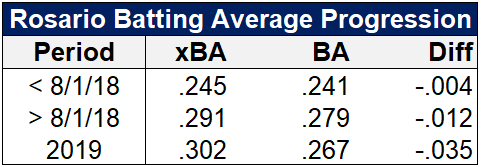
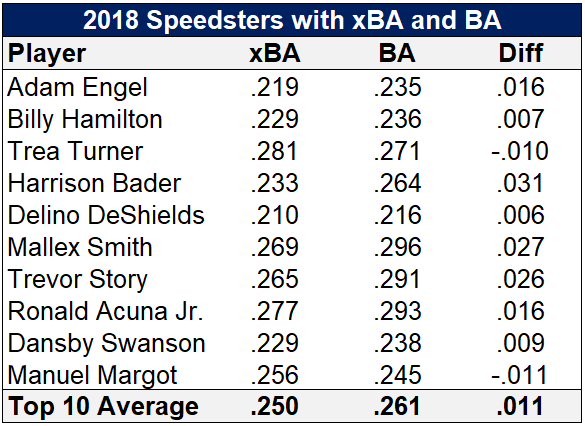
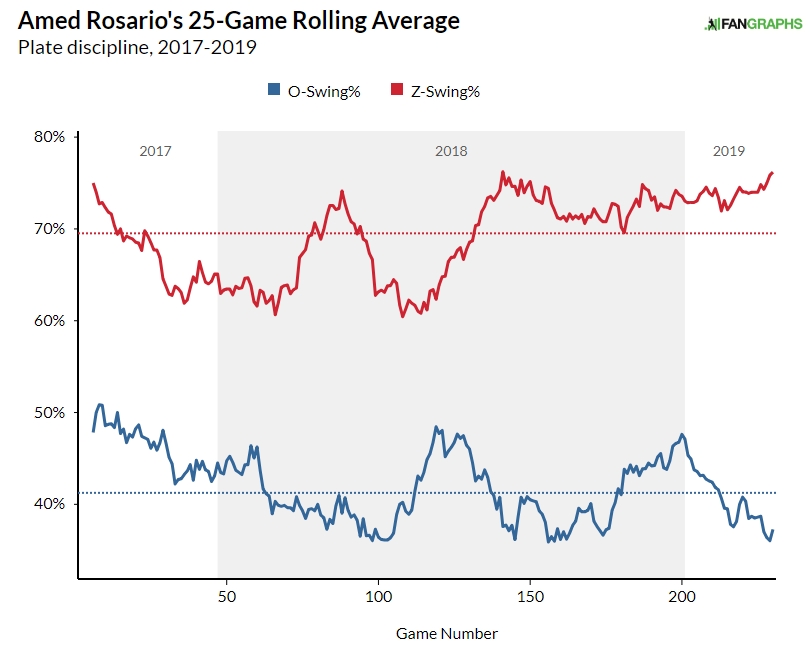

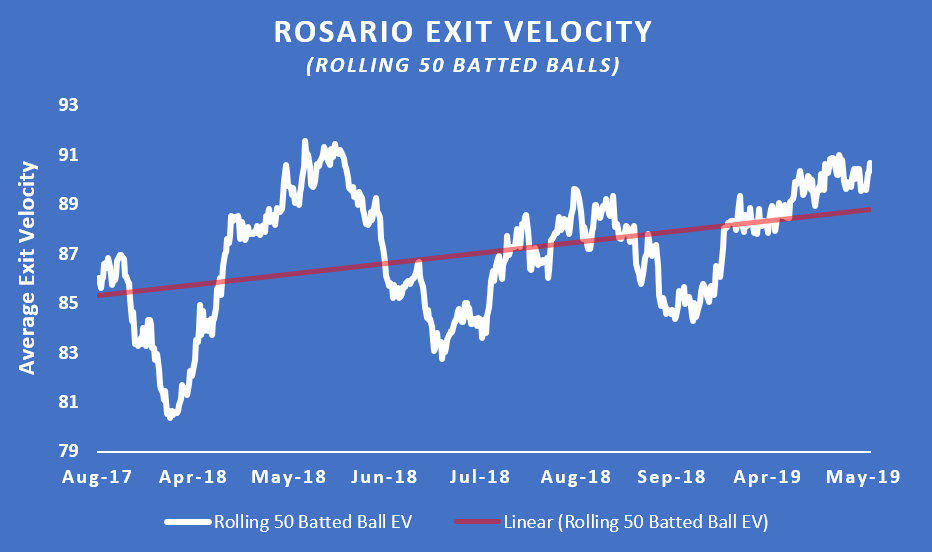
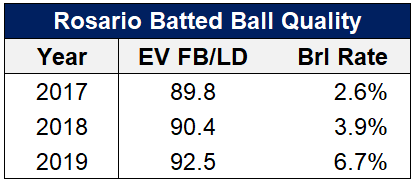
Traded Andrus for Rosario a month ago so this is great news!
Drafted Rosario but dropped him for T Anderson…nobody seems to like Anderson (playing over his expected stats) so I wonder how much I could get in return in a trade. Do I ride with Tim or jump on the Rosario train…?
Why would you do that? Its not like the author recently returned from the future where Rosario is a HOF player, with a run that started on 5/5/19. I would bet you anything that Rosario will not become Altuve. Take the guy that is hitting now. Rosario has a high BABIP, I wouldn’t invest too heavily in positive regression just because xStats say it should be better. XStats are not any more valuable than what we already have – they are just different. Sure, he might break out sometime but you can’t sell someone who is currently hitting for a guy that you hope will hit.
Anderson is a great sell high target. I do think he has actually improved this year, but if you can find an owner that really buys into the hot start getting value for Anderson and picking up Rosario could be a great move.
I was just growing impatient with Laureano and his barely above .600 OPS. Rosario would replace those steals and get me quite a few more ABs to boot. Is Laureano’s breakout still coming or what?
I should say, he’ll get me more ABs than Laureano (by virtue of hitting higher in the order) if he can solve his defensive issues. Adeiny Hechavarria was called up because of them.
Rosario’s career defensive metrics are solid. The Mets aren’t playing Hechavarria over Rosario.
In terms of Laureano – I still like him. Making that swap would depend on the rest of your roster, but I’d likely pull the trigger.
Would you drop Marcus Semien for Rosario?
Yes.
For as long as Semien leads off, he’s the better fantasy SS.
Do you think his below-average (being generous) will affect his playing time?
Rosario’s career defensive metrics are strong. Moreover, who else do the Mets have that will play short? I don’t think it will be an issue.
Who would you rather have between Rosario and Wong? He seems to be another that is changing his approach at the plate taking more walks and STL has been very aggressive on the base paths early on.
To be fair I haven’t done a deep dive into Wong, but given how much MLB history he has I would be more skeptical of an outright improvement. Go with Rosario.
As a Met fan, and despite his development at the plate, I think Rosario is still a ways away from being a worthy 12 team starting SS. For one, his defense has been atrocious (massive amounts of errors) for the last two to three weeks and that’s going to cost him what was previously an automatic, everyday spot in the lineup. Second, the Mets show no interest in trying him out at the top of the lineup. Callaway (or his bosses) insist on putting out the same poorly-laid-out lineup every day and “just letting guys figure it out.” I keep waiting for the day when they finally put Rosario at the leadoff spot with McNeil second and work from there. I understand a stash pickup to wait for the day when he’s a full time leadoff hitter, but that’s going to take either a managerial change or a collective organizational removal-of-heads-from-butts (I’ve been waiting 20 years for that to happen).
Great article! This is some of the better analysis I’ve read on any baseball site. Strong work!!